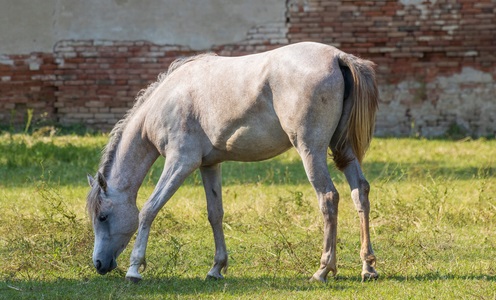From chronic dermatitis and dandruff to more serious conditions such as vitiligo and summer itch, horses have a wide range of skin conditions they’re faced with. As owners, it’s imperative to be aware of these conditions in order to provide them with the best care possible. Read on for an informative guide on equine skin conditions, including identifying, treating, and preventing horse skin problems.
Horse Skin Conditions: What Every Owner Should Know
Just like humans, horses have numerous skin conditions and epidermal diseases that require careful treatment and routine maintenance. Since your horse’s skin is his primary line of defense against microbes and germs, keeping his coat and skin strong and healthy is vital to his overall well-being and quality of life. While good grooming and proper hygiene are crucial, you may also wish to discuss ways to bolster his skincare regimen with a trusted vet, including horse supplements and other treatments to aid in his overall health.
Here are a few horse skin conditions to be aware of, as well as their causes and modes of treatment:
#1 Mange
A parasitic infection that’s caused by microscopic mites, mange is a fairly common skin condition among horses. While it is seen most often on the lower legs of draft horses with heavy feathering, it can affect any horse breed. The primary forms of equine mange in the United States include:
- Chorioptic mange: This type of mange is caused by the Chorioptes equi mite, which mainly affects the lower legs of horses with feathering.
- Demodectic mange: Caused by the Demodex equi mite, this type of mange targets the horse’s face, neck, and shoulders.
- Psoroptic mange: A rarer form of the skin condition, psoroptic mange is caused by the Psoroptes equi mite, resulting in lesions under the jaw, tail, and main, as well as in the armpits and groin.
Signs & Symptoms: At first, mange will appear as small round bumps, followed by bald spots shortly thereafter, accompanied by thickened, scaly skin (typically on the lower legs). In more acute cases, the skin may even be raw or indicate signs of secondary infections. Since it usually leads to itching of the skin, horses will bite, stamp and rub their legs seeking relief. In very rare instances, mange may appear on other areas of the body.
Modes of Treatment: Since this is a very uncomfortable skin infection, it’s important to treat horses as soon as possible to provide relief. In addition, expediting treatment can help prevent permanent scarring and thickening of the skin, which can adversely affect the mobility of the pastern joints. Consult your veterinarian for the best topical and/or oral treatments, which may include certain types of antibiotics for more severe cases.
Preventive Measures: Since mites are typically passed from one horse to another, be sure to quarantine any horses affected by mange. If horses show any signs of mange, be sure to avoid contact with others at events and shows. Since some horses may be asymptomatic (i.e., carry mites without displaying any signs of infection), it is best to quarantine any new horses and inspect them closely before they cohabitate with other horses. Also, be sure to keep stall bedding fresh and change out any bedding used by horses who were affected by mange. If there is a known outbreak, experts recommend treating all horses to ensure the mite infestation is eradicated.
#2 Ringworm
Also known as fungal dermatitis, ringworm is actually a fungal infection; no worms are involved. However, its namesake is due to the distinctive ring-like red pattern that often forms on the surface of the skin. This fungal infection of the skin is caused by one of several organisms – most commonly members of the Microsporum or Trichophyton families.
Once the fungal infection has set in, it feeds off the keratin (protein) that is found in the epidermis (skin) and hair of the animal. This infection can be tricky, since it can survive many months in an environment, on fences or tack, and may be carried upon the skin for up to three weeks before any signs of infection are apparent. During this incubation period, the fungi spreads easily and rapidly to other animals, thus creating sudden outbreaks which may affect an entire herd of horses.
Signs & Symptoms: In the case of ringworm, one will typically observe round-shaped, hairless patches on the coat, as well as skin that is crusty and scabbed in appearance. The most common areas for lesions to manifest are the shoulders, neck, and face, as well as under the girth or saddle; however, they may appear anywhere on the horse’s body. Although the affected regions may be itchy or sore, they usually cause little to no discomfort – in many instances, the horse may look completely healthy otherwise.






